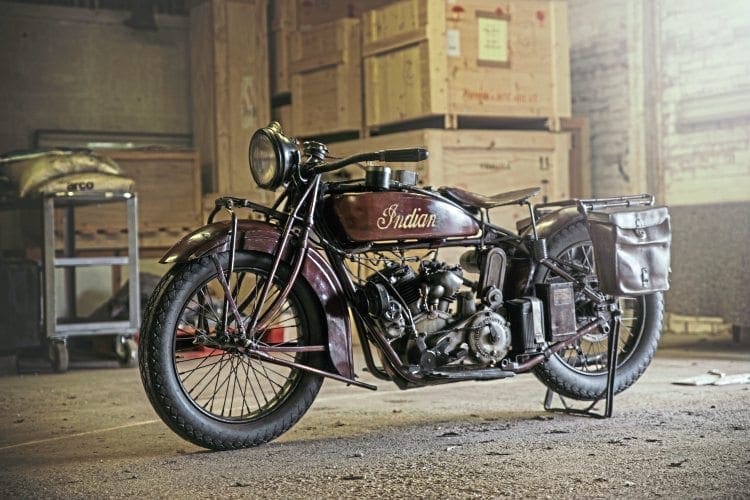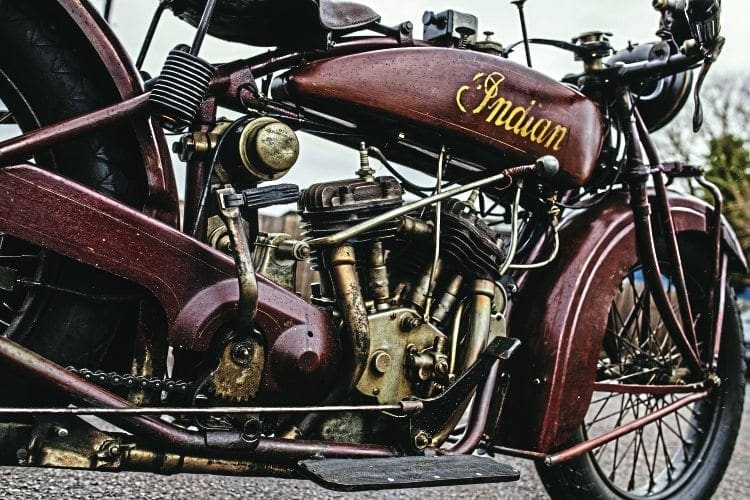Until seven years ago, this Indian Scout had been owned by just one man. But this American was built, and has spent its life, in Germany.
PHOTOGRAPHY: Gary Chapman
Indian has always been a marque at the very forefront of motorcycle design and technology in the opening decades of the 20th century.
Today, Indian is remembered mainly for its powerful, large-capacity V-twins, the first of which appeared in 1907.
The Springfield firm’s first twin was based on its highly successful ‘F-head’ (inlet-over-exhaust) single-cylinder model, and this type of engine would continue to power the road-going ‘Iron Redskins’ until a new 61ci (1,000cc) ‘flat head’ (side-valve) V-twin – the Powerplus – was introduced for 1916.

A smaller Indian V-twin model, the 37ci (600cc) Scout, joined the Powerplus in 1920, soon gaining a deserved reputation for durability; so much so that ‘You can’t wear out an Indian Scout’ became its advertising slogan.
Contributing to this longevity was the use of gears for the primary drive rather than the customary chain, and this unusual feature would endure until 1933.

A 45ci (750cc) variant was first offered in 1927 and then in April 1928 the 101 Scout appeared featuring a revised 750cc ‘flat head’ engine in a new, longer-wheelbase frame.
This sporting machine would prove an immense success for the Springfield firm, so much so that its replacement in 1931 by a heavier Chief-framed model was greeted with dismay.
Read more and view more images in the April 2019 issue of CBG – on sale now!




